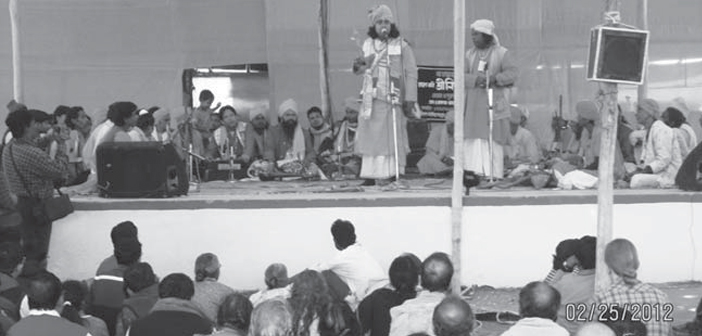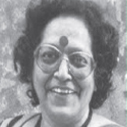Poush is the month in the Bengali calendar that coincides with the onset of winter, from mid- December to mid-January, according to the English calendar. It is when trees shed their leaves, when migrant birds fly into this part of the world, when the Bauls assemble at the Poush Mela from all parts of Bengal to participate in Baul performances within an environment of harmony, colour, music and song. Though it is organised in winter, it is also a celebration of the harvest season.
The Poush Mela is held at Santiniketan in Bolpur, located in Birbhum, one of the most culturally rich but financially poor districts in West Bengal. Birbhum is home to many fairs such as the Kenduli Mela, the Medini Mela, the Tarapeeth Sports Festival, the Basanta Utsav, the Buddha Purnima Pooja fair, the Shivratri Mela, Chandidas Mela and so on. But the most famous and internationally popular fair is Poush Mela organised at Santiniketan every year.
Santiniketan – the nucleus
Santiniketan was so named by Maharshi Devendranath Tagore, because he found this place a paradise of peace and harmony. His son, Rabindranath Tagore first built ‘Patha Bhavan’, a school on this land, which later became the University Viswa Bharati in 1921, made possible with the money Tagore won when he was bestowed the Nobel Prize for Literature. Viswa Bharati is not an ordinary university for education and academia. It was built with the ideology of providing a cultural and nature-rich environment for children who came to educate themselves.
Within many cultural programmes that dot the Bengali calendar year in Santiniketan, is Poush Mela – a fair that now draws international visitors, though it is not yet a conventional site for tourists or a place canvassed as a tourist attraction. Poush Mela or Poush Utsav as it is called, was begun by Maharshi Devendranath Tagore. It was a kind of celebration of Devendranath Tagore’s initiation into the Brahmo Samaj from Ram Chandra Vidyabagish, along with 20 more followers on 21 December 1843. In 1891, to coincide with the establishment of a Brahmo temple, a small fair was organised to celebrate the anniversary of the temple in 1894, right opposite the mandir. It was a small fair which grew in strength, popularity and fame over the past 100 years and more. As the fair enlarged in size, events, cultural programmes and footfalls, it was shifted to a much larger field in Purbapalli.
Rabindranath Tagore is responsible for making the Poush Utsav a great annual event where students and teachers of Patha Bhavan took active part in cultural programmes redefining the guru-shishya relationship away from academia, examinations through songs, prayers, dance, music, recitations and so on. This practice sustains till this day with more participants, who queue up to sit on a permanent platform under the ancient, legendary tree christened ‘Chhatimtala’, where prayers begin early in the morning.
Arts, crafts and performances
The crowds, gathered from across the state, the country and the world, gradually move towards the fair grounds to go around the 1500-odd stalls which exhibit for sale, art works, crafts, toys, musical instruments, dokra idols of Gods and Goddesses from the Hindu pantheon, from across Birbhum district and beyond. Though officially, the fair is supposed to last for three days, unofficially, it goes on for ten days. Food stalls selling indigenous items you cannot find elsewhere are sold at dirt-cheap prices. Among these are delicacies like rice-flour pancakes stuffed with a mixture of coconut and khoya paste, delicious malpuas dipped in sugar syrup, and coconut laddus.. Home-made pickles, jams and jellies made more with love than with the price in mind, are also sold across counters.
Dokra, kantha work, leather bags, paintings, earthenware crafted from the red earth of Birbhum and Bankura, batik saris and home-made woollens like shawls, jackets, patchwork carpets, patchwork quilts that are specialties of Birbhum in general, and Santiniketan in particular, set the mela on fire with colour. Instant artists will readily sketch your likeness for a small fee. But the two biggest attractions of this fair are the Baul performances and the Santhal dancers performing in groups, dressed up in their traditional costumes, flowers in their hair, colourful saris jacked up to their knees, their dusky skins shining in the winter sun. If you try to talk to them, they shy away and even if they speak, you cannot understand the dialect they use.
The music of Bauls expresses the inner joy, the happiness of love spreading from oneself through old gestures, The Bauls live a free existence without discrimination, away from accepted norms of social behaviour. The Bauls’ ecstatic form of worship that spans dancing, singing, sometimes, in a trance-like state, and unconventional modes of behavior, such as wearing both Hindu and Muslim garments at the same time, have labelled them nonconformists. The woman plays a vital role in the Baul cult. Without a woman partner, the cult loses its significance. The woman is also considered a chetan guru or one who is conscious of all activities in the cult. Tagore was deeply influenced by the culture of the Bauls and much of their compositions have found their way into many of his own.
There is a huge display of fireworks on the night of the first day of the fair, attended by massive crowds both local and visiting. Poush Mela fetches a handsome seasonal income for the rickshaw pullers, the roadside food stalls serving piping hot food, the local restaurants and the coconut vendors. The most exciting reality of Poush Mela is that if you wish to book a decent hotel within the neighbourhood of the mela, you must book a room exactly one year in advance! When we visited the mela for the first time, we were surprised by the very unusual fare offered. When we begin the journey home, the memories are such that we wish to visit the Mela every year!


